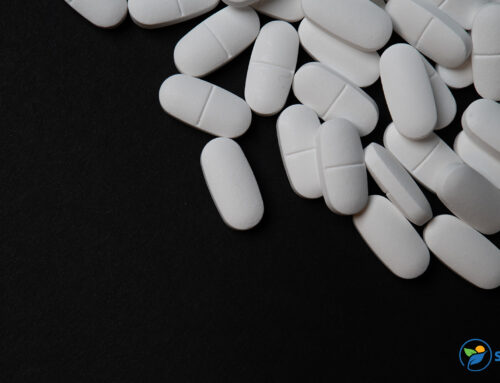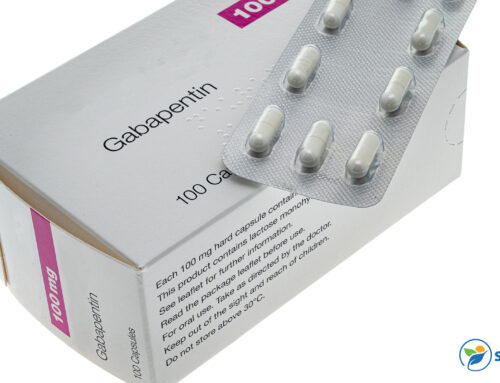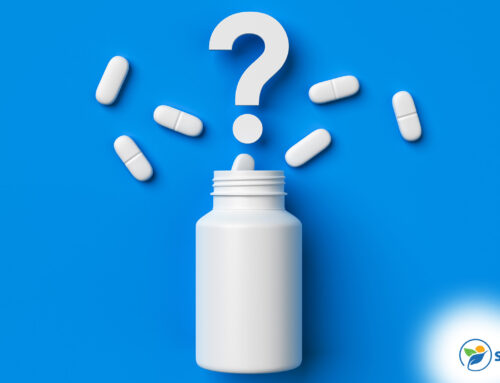As the opioid crisis continues to rage on, strong new drugs have entered the market, posing an even greater risk to opioid users. Synthetic opioids, such as fentanyl, have a much greater potency than drugs like heroin, which are synthesized from naturally occurring opiates. Synthetic opioid overdoses in 2019 were 12 times higher than in 2013, and this number continued to increase through the pandemic. Read on to learn the differences in fentanyl vs. heroin and what makes fentanyl uniquely dangerous.
What Is Heroin?
Heroin is made from morphine, a substance that naturally occurs in opium poppy plants. It comes as a white or brown powder or as a sticky black substance called “black tar heroin.” People consume heroin by snorting, smoking or injection and sometimes combine it with other drugs to amplify its effects.
Once taken, heroin rapidly binds to opioid receptors in the nervous system. This causes chemical reactions that relieve pain and produce feelings of pleasure. For a few hours after a person takes heroin, they experience euphoria, clouded thinking, drowsiness and a reduced heart rate and breathing rate. When those effects end, the person feels depressed, which causes them to crave the drug’s effects again. Too much heroin can cause an overdose in which the breathing and heart rate slow to dangerous levels or stop completely.
Regular heroin use creates a tolerance, causing the person to require higher doses in order to experience the same euphoria. This makes heroin highly addictive. Once a person develops a dependence on the drug, they can experience withdrawal symptoms just a few hours after the drug was last taken. Withdrawal symptoms include restlessness, severe muscle and bone pain, difficulty sleeping, stomach sickness, cold flashes and uncontrollable leg movements.
What Is Fentanyl?
Is fentanyl heroin? Fentanyl and heroin are both opioids, but they’re made in different ways. Whereas heroin is made from a naturally occurring substance, fentanyl is completely synthetic. This synthetic drug was intended as a powerful pain reliever for treating severe pain after surgery or chronic pain in people who’ve developed a tolerance to opioids. It’s 100 times more powerful than morphine.
Doctors administer the drug as a shot, patch or lozenge. Physicians still use fentanyl for medicinal purposes, but the DEA classifies it as a Schedule II controlled substance because of its high potential for addiction. Patients who take prescription fentanyl at a doctor’s instruction can experience dependence, which can sometimes lead to addiction.
Illegally produced fentanyl, which is largely responsible for the recent increase in overdoses, is synthesized in labs. Its potency means it only takes a small amount to produce a high. This makes it attractive to drug dealers as an affordable additive to other drugs such as heroin, cocaine, methamphetamine and MDMA. Mixing fentanyl into these drugs without the buyer’s knowledge makes the drugs feel more potent while saving the dealer money. This dangerous practice increases the risk of overdose.
Overdose is not the only risk of fentanyl use, however. Long-term use of the drug can result in breathing problems, heart attack, heart failure, weakened immune system, reproductive issues and mood disorders.
Fentanyl vs. Heroin: What Is the Difference in How They Work?
The key differences in fentanyl vs. heroin are potency and method of use. Fentanyl binds to the same opioid receptors as heroin and produces the same feelings of euphoria, but it takes a smaller amount to do so.
Just how strong is fentanyl? Fentanyl is 50 times stronger than heroin. Unlike heroin, which can be snorted, smoked or injected, people take fentanyl via blotter paper, eye drops, nasal spray or pills.
Opioid overdoses can sometimes be counteracted by administering naloxone right away. Naloxone rapidly binds to opioid receptors and blocks the opioid’s effects. Unfortunately, fentanyl is so much stronger than other opioids that it often requires multiple doses of naloxone to counteract it. However, after naloxone has been administered, the person’s breathing may slow or stop again. For this reason, if you suspect someone has overdosed on fentanyl, you should immediately call 911 and keep a close watch on them until paramedics arrive.
What Makes Fentanyl So Dangerous and Why It Requires Treatment
Fentanyl and other synthetic opioids are now the leading drugs involved in U.S. drug overdose deaths. Fentanyl’s power enables it to produce euphoric feelings more easily, but this potency can also lead to withdrawal and overdose more quickly.
Some overdose deaths occur because fentanyl is added to another drug without a user’s knowledge. If a person inadvertently takes a stronger opioid than their body is used to, it can easily result in an overdose. Someone purchasing heroin or other drugs on the street faces a risk from fentanyl even if they have no intention of using this particular drug.
Withdrawal from fentanyl includes the same symptoms as heroin: severe muscle and bone pain, cold flashes, diarrhea and vomiting, uncontrollable leg movements, difficulty sleeping and cravings. These symptoms can occur within a few hours of the last dose of fentanyl and can feel unbearable. This deep discomfort makes quitting incredibly difficult, and people who’ve decided to quit should seek treatment.
Treatment for fentanyl addiction often includes medications and behavioral therapies. During the detox phase, health care professionals provide 24/7 observation while administering drugs to help relieve withdrawal symptoms. These medications bind to the same opioid receptors as fentanyl to reduce cravings. Then, behavioral therapies are used to address the underlying issues that led to addiction, modify attitudes related to drug use and increase healthy life skills.
If you or a loved one has an addiction, don’t wait to get help. Facing a fentanyl addiction is challenging, but the caring team at Sunlight Recovery is ready to help you overcome your addiction. If you’re ready to take your first steps back to a sober life, contact Sunlight Recovery at (888) 402-3647.





